Activity Participation
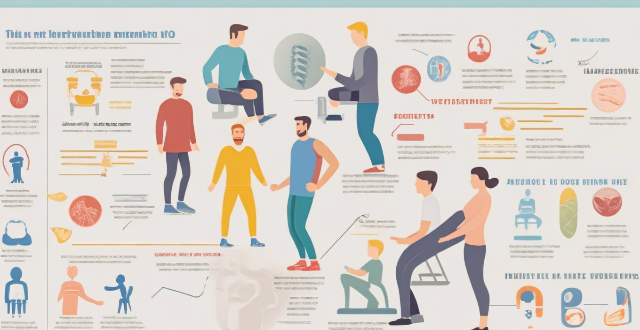
What impact does participation in sports have on the mental health and well-being of marginalized groups ?
This article explores the impact of sports participation on mental health and well-being, particularly for marginalized groups. It highlights the physical health benefits such as improved cardiovascular health, weight management, and immune system strengthening. Mental health benefits include reduced stress and anxiety, increased self-esteem, improved sleep, and enhanced cognitive function. The article also emphasizes the importance of providing accessible sports opportunities and promoting inclusivity to reduce stigma surrounding mental health issues, build resilience, and foster strong communities among marginalized groups.

How does sports participation influence self-esteem in children ?
Sports participation has a positive impact on children's self-esteem by increasing physical fitness, developing skills and mastery, promoting social interaction and teamwork, and encouraging goal setting and achievement.
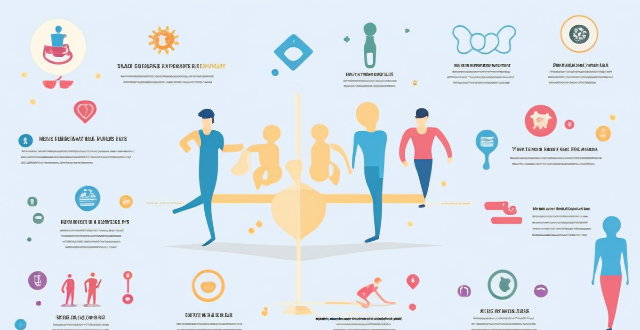
What is the impact of sports on mental health and well-being ?
The article discusses the positive impacts of sports on mental health and well-being. Regular physical activity can reduce the risk of depression, anxiety, and improve sleep patterns. Participation in sports also enhances emotional resilience and social interaction, which are beneficial for mental health. The mechanisms underlying these effects include biological changes such as increased endorphin release and neurogenesis, as well as enhanced class identity and overall health. Encouraging participation in sports at all ages can play a significant role in fostering communities that are mentally stronger and happier.

How does sports participation affect one's self-esteem and confidence ?
Sports participation positively affects self-esteem and confidence by providing opportunities for skill development, goal achievement, positive feedback, facing challenges, overcoming obstacles, and developing a sense of mastery.

How can male-dominated fields encourage more female participation ?
In many industries, including technology, engineering, and finance, women are underrepresented. Encouraging more female participation in these male-dominated fields is not only beneficial for diversity and inclusion but also for innovation and economic growth. Here are some strategies that can be implemented to attract and retain women in these sectors: Strategies to Encourage Female Participation: 1. Education and Outreach Programs 2. Workplace Culture and Environment 3. Policies and Practices 4. Networking and Professional Development 5. Public Awareness and Media Representation

In what ways can schools encourage participation in sports without sacrificing academic rigor ?
Participation in sports is an essential aspect of a student's overall development. However, schools often face the challenge of balancing academic rigor with sports participation. This article discusses ways schools can encourage participation in sports without sacrificing academic rigor, including integrating sports into the curriculum, providing support for student-athletes, promoting a culture of wellness, collaborating with parents and community members, and offering incentives for academic success. By implementing these strategies, schools can create an environment where students can thrive both academically and athletically.

How can we promote public awareness and participation in water resource management ?
Water resource management is crucial for communities worldwide, and promoting public awareness and involvement is key. Strategies include education campaigns, public participation initiatives, incentives, and collaboration with local government and businesses. These efforts aim to increase knowledge, encourage active participation, and foster conservation and sustainability.

What tools or software do you recommend for enhancing audience participation in live streaming ?
To enhance audience participation in live streaming, consider implementing interactive features such as live polls and surveys, Q&A sessions, and games and quizzes. Utilize chat moderation tools like chatbots and human moderators to maintain a positive atmosphere. Integrate social media by creating unique hashtags and promoting the stream across different platforms. Offer rewards and incentives like giveaways, prizes, and loyalty programs to encourage active participation.
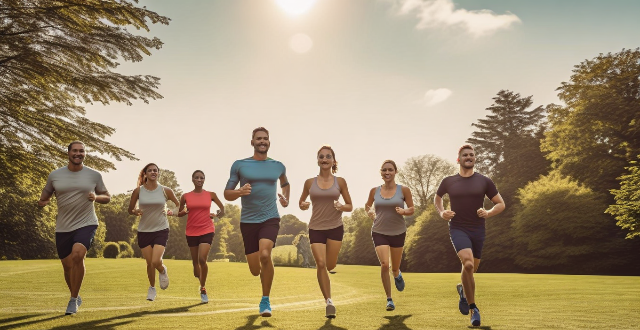
What is the relationship between sports participation and improved mental health from a public policy perspective ?
The relationship between sports participation and improved mental health is complex and multifaceted, involving considerations of individual well-being, societal benefits, economic implications, and governmental responsibilities. Regular exercise through sports can lead to better physical health, which positively impacts mental health by releasing endorphins and reducing stress. Social interaction promoted by team sports and community building through sports events enhances social support networks crucial for mental health. From a societal perspective, promoting sports participation can serve as a preventive measure against mental health disorders, potentially reducing healthcare costs and improving educational outcomes. Economically, a healthier workforce and tourism opportunities from sports events can boost productivity and local economies. Governments have responsibilities in funding sports facilities, integrating sports into education, and running public awareness campaigns. Overall, fostering sports participation through supportive policies can significantly improve public mental health while offering broader societal and economic advantages.

What role does public participation play in climate policy evaluation ?
Public participation is vital in climate policy evaluation as it ensures accountability, transparency, and diverse perspectives. It allows for the co-creation of solutions and fosters a sense of ownership among citizens. Governments can promote public participation through public consultations, collaborative governance, and digital technologies. Overall, public participation leads to more effective and sustainable climate policies.

Can excessive sports participation harm a child's physical development ?
Overtraining in sports can lead to physical injuries, psychological stress, and hindered social interaction in children. It is important to ensure a balanced approach to sports participation, emphasizing rest, proper training techniques, and mental health support.

How does gender equality affect participation in competitive sports ?
Gender equality is a fundamental human right that ensures individuals are not discriminated against based on their sex. In the realm of competitive sports, gender equality can significantly influence participation rates, access to resources, and overall opportunities for athletes. This discussion will explore how gender equality affects participation in competitive sports. The importance of gender equality in sports includes equal opportunities, media coverage and representation, financial support and sponsorship, and safety and well-being. Challenges faced due to lack of gender equality include unequal participation rates, limited career opportunities, and cultural barriers. Strategies to promote gender equality in sports include policy changes, education and awareness, and supportive infrastructure development. In conclusion, gender equality plays a crucial role in determining participation rates in competitive sports. By addressing issues such as unequal opportunities, media representation, financial support, safety concerns, and cultural barriers, we can create a more inclusive environment that encourages females to engage actively in sports. Through policy changes, educational initiatives, and supportive infrastructure development, we can promote gender equality within the world of competitive sports, ensuring that talent and passion are the only determining factors for success.

How can we ensure employee participation during safety drills ?
Strategies for ensuring employee participation during safety drills include clearly communicating the importance of these exercises, making them engaging and interactive, offering incentives for participation, and creating a supportive workplace culture. By implementing these strategies, employees are more likely to actively participate in safety drills, leading to improved preparedness for emergencies and a safer workplace overall.

Is there a link between physical activity and improved creativity ?
The text discusses the potential relationship between physical activity and creativity, highlighting various studies and theories that support this link. It suggests that regular physical exercise can enhance creativity by improving blood flow to the brain, promoting a relaxed mental state, and providing necessary breaks from mentally demanding tasks. The text also explores practical implications for individuals and organizations, suggesting strategies such as integrating movement into daily routines and designing active workspaces to boost creative thinking. Overall, while more research is needed to fully understand the relationship between physical activity and creativity, the text encourages incorporating physical activities into daily practices to potentially enhance imaginative thinking and innovation.

What is the role of employee participation in maintaining workplace safety ?
**Role of Employee Participation in Maintaining Workplace Safety** Employee participation is crucial for maintaining workplace safety. It helps identify hazards, promote awareness, enhance communication, build trust, and improve compliance with safety regulations. By involving employees in safety initiatives, organizations can create a safe work environment and ensure the well-being of their workforce.

What is the role of public participation in shaping climate and environmental law ?
Public participation plays a crucial role in shaping climate and environmental law. It ensures accountability, transparency, legitimacy, and trust in the decision-making process. Public participation also fosters innovation and collaboration in addressing climate and environmental challenges. To be effective, public participation must be accessible, inclusive, relevant, and continuous. By involving the public in the development of climate and environmental laws, decision-makers can create more equitable, responsive, and sustainable policies that benefit both current and future generations.

In what ways can sports education foster a lifelong love of physical activity ?
The text discusses the role of sports education in promoting a lifelong passion for physical activity among children. It underscores the importance of making sports fun and enjoyable, offering choices, creating a supportive environment, improving fitness levels, building motor skills, developing sportsmanship, teaching teamwork, perseverance, discipline, and time management. The author emphasizes that sports education is essential for children's overall development and encourages prioritizing it in schools and communities to foster healthier, happier lives filled with lifelong love for physical activity.

How to choose the right extracurricular activity for your child ?
Choosing the right extracurricular activity for your child is crucial for their development and well-being. Consider your child's interests, skills, and abilities, evaluate the time commitment and logistics, seek recommendations and read reviews, and involve your child in the decision-making process to help them choose an activity they will enjoy and benefit from.

How can the media be used to increase participation in youth sports programs ?
The media can be used to increase participation in youth sports programs by creating awareness, generating interest, and providing information about opportunities available. Strategies include collaborating with local TV and radio stations for PSAs, utilizing social media platforms for short videos and infographics, live streaming sporting events, conducting interviews with coaches and athletes, creating online directories of sports programs, and hosting Q&A sessions and webinars. By leveraging the power of the media, we can inspire more young people to engage in sports and enjoy its numerous benefits.

How does hydration affect physical activity ?
Hydration is crucial for physical activity, affecting performance, endurance, and well-being. It regulates body temperature through sweating and heat tolerance, supports energy production and recovery, lubricates joints, maintains blood volume for heart function, and ensures mental clarity. Dehydration can lead to decreased performance, impaired thermoregulation, cardiovascular strain, and reduced cognitive abilities. To maintain hydration during physical activity, strategies include pre-activity hydration, regular fluid intake during exercise, post-activity rehydration, electrolyte balance, monitoring urine color, listening to thirst signals, and avoiding diuretics.

How have historical events impacted the acceptance and participation of women in various sports throughout time ?
The text discusses how historical events and societal norms have influenced women's participation in sports throughout history. In ancient civilizations like Greece and Rome, women were generally excluded from athletic competitions due to cultural beliefs and expectations about their roles. During the Middle Ages, their involvement remained limited, with some exceptions for practical purposes. The Industrial Revolution brought slight progress as leisure time increased, but gender stereotypes still hindered women's participation. Pioneering figures in the late 19th and early 20th centuries began promoting women's sports, leading to the inclusion of women's events in the Olympics. After World War II, there was a push for gender equality, including in sports, resulting in increased opportunities for female athletes. Today, while women participate in a wider range of sports than ever before, challenges such as unequal treatment persist, requiring continued advocacy for gender equity in sports.

Can physical activity improve mental health ?
Physical activity has been found to significantly improve mental health by enhancing self-efficacy and stress self-management skills. Research shows that engaging in physical activities can lead to a sense of accomplishment, boosting an individual's confidence in their abilities, which in turn fosters better stress management and contributes to enhanced mental well-being. This relationship is particularly important for adolescents, a demographic vulnerable to mental health challenges. Future research should focus on identifying specific types of physical activities that have a greater potential to enhance these skills, guiding the development of targeted interventions aimed at improving mental health through physical activity.

Does regular physical activity prevent burnout ?
Regular physical activity can help prevent burnout by boosting mood, reducing stress, improving sleep quality, enhancing cognitive function, and promoting social interaction. However, it should be part of a broader approach to managing stress and preventing burnout.

Is there a correlation between playing sports and reduced risk of obesity in adolescents ?
The text discusses the correlation between playing sports and reduced risk of obesity in adolescents. It defines obesity as an excessive accumulation of fat that poses a risk to health and is typically assessed using body mass index (BMI). The importance of physical activity, particularly sports participation, in preventing obesity during adolescence is highlighted. Numerous studies have found a positive correlation between sports participation and reduced obesity risk, with mechanisms including increased energy expenditure, muscle development, improved dietary habits, and psychosocial benefits. However, potential limitations such as selection bias, cultural variations, and gender differences should be considered. Encouraging sports participation among adolescents could be an effective strategy for combating obesity, but it should be part of a broader approach that includes education on nutrition and other forms of physical activity.

Can regular physical activity prevent depression ?
Regular physical activity can reduce depression risk by releasing endorphins, improving sleep, and boosting self-esteem. Start with 30 minutes daily of activities like walking or swimming, and consider joining a fitness class for motivation. Gradually increase intensity and listen to your body to avoid overexertion.
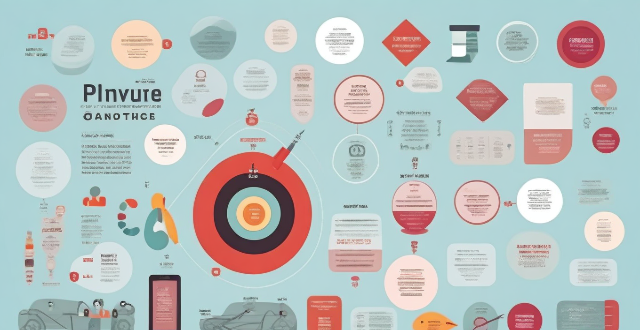
Can regular physical activity reduce anxiety levels ?
Regular physical activity can help reduce anxiety levels by improving mood, reducing stress hormones, promoting better sleep, increasing self-esteem and confidence, and providing social support. Engaging in at least 30 minutes of moderate-intensity exercise per day can significantly reduce anxiety symptoms.

How does physical activity impact public health policies ?
The text discusses the importance of physical activity in promoting individual and public health. It outlines how regular exercise can prevent chronic diseases, improve mental health, and aid in weight management. The text then explains how these benefits influence public health policies, including the development of programs promoting physical activity, funding for research, and public awareness campaigns. Overall, it emphasizes the need for governments to promote physical activity through various initiatives, aiming to create a society where being active is a way of life.
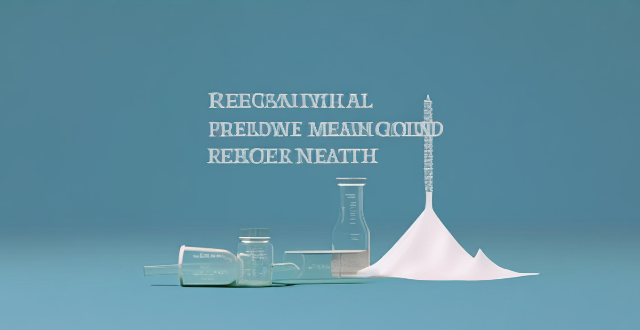
Can regular physical activity improve mental health ?
Regular physical activity can improve mental health by reducing the risk of depression and anxiety, enhancing self-esteem and cognitive function, improving sleep quality, and reducing stress. Practical recommendations for incorporating exercise into daily routines include starting small, finding enjoyable activities, setting realistic goals, making it social, incorporating strength training, staying consistent, listening to your body, and consulting with professionals.

Is there a connection between sports and happiness ?
The text discusses a study that found a significant, positive connection between sports participation and individual subjective well-being. The study also found that the impact of sports participation on subjective well-being varies depending on the population being studied and that class identity and health play a mediating role in this relationship. Overall, the study highlights the importance of physical activity for improving individuals' overall well-being and suggests that national fitness and health initiatives should be promoted to improve society's overall well-being.

Can regular physical activity prevent age-related diseases ?
The text discusses the potential of regular physical activity to prevent age-related diseases, highlighting its numerous benefits such as improved cardiovascular health, enhanced immune function, better bone density, reduced inflammation, and improved mental health. It further elaborates on how these benefits can specifically prevent or delay the onset of diseases like cardiovascular diseases, diabetes, osteoporosis, cancer, and dementia. The conclusion emphasizes that while regular physical activity can play a significant role in preventing age-related diseases, it should be part of a comprehensive approach to health that also includes a balanced diet, adequate sleep, and stress management.